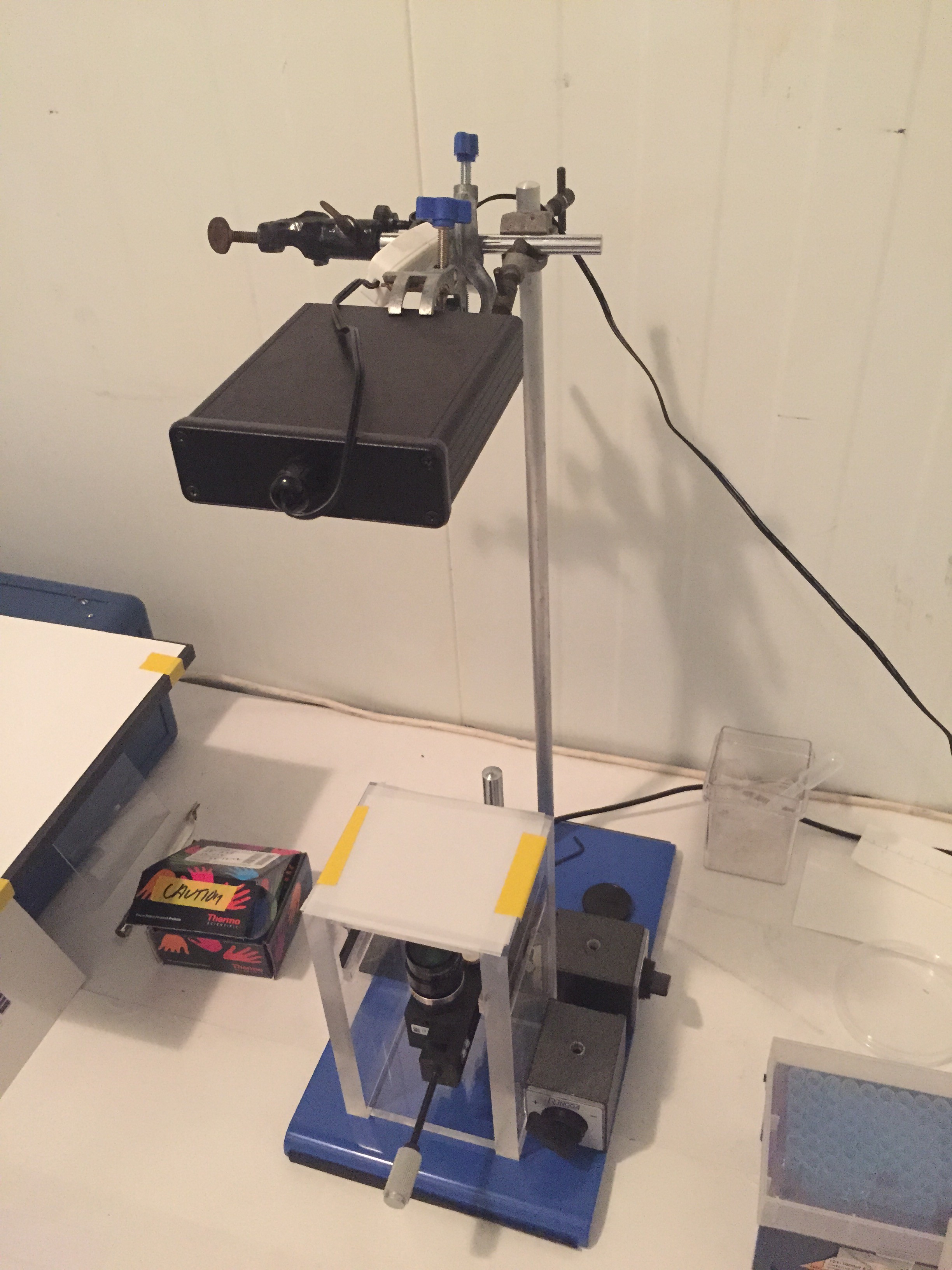April 27th Not safe for late night viewing…
In which I bring my dark-vision costume into the light.
Regular readers will have looked for the Sunday afternoon LabFab post, in vain. I had a friend visit this weekend and we did friendly things like go to the movies, and touristly things like go to the Nottingham Castle, and just plain amazing things like go Bunny Old Woods to see the bluebells. If you are reading this anywhere near Nottinghamshire, get to Bunny! (relevant web page here).
Because it feels vaguely unethical to spend working hours amusing myself (and with luck amusing you) by writing blog posts, I will use this opportunity to post a pair of pictures, relevant to the story. The first one shows the rig that holds the segments for their photo shoot. In an earlier post, I showed an earlier version, but the design has settled down now to a working rig. The second picture (scroll down) shows me wearing the sniper ‘scope, the gizmo that lets me see in the infrared. Because the ‘scope converts infrared to visible light (they don’t have one that can couple directly to the optic nerve, or at least not for sale), visible light emerges from the eyepiece and not all of it is swallowed up by my pupil. Plenty of rays hit my cornea, eyelids, eyebrows, and maybe cheeks, and can then bounce into the room and interact with the segments. Bad! To prevent that, I have made a shroud. The shroud fits onto the helmet holding the sniper ‘scope, thanks to Laura’s clever bit of sewing, and has a hole to admit the eyepiece, which is taped around the sides to minimize stray light sneaking out. It looks a little scary but that is one advantage of working in the dark – no one can see me. Until now. Sweet dreams everyone!

Stand for imaging segments. The black box at the top is the infrared light source (a bank of diodes emitting at 940 nm). Below, a plexiglass rack holds the washer-dish containing segments (that bit is not shown). The white papery substance atop the rack is tracing paper to diffuse the light. The video camera and macro lens are visible inside the plexiglass rack. There is a pair of rails on which the washer dish rests, about 1 cm above the lens.
